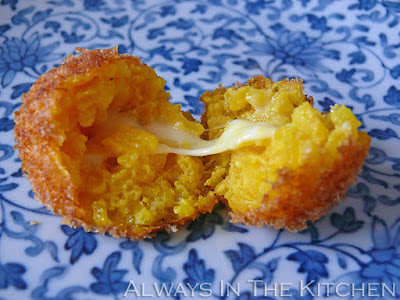
I developed this recipe because I had a lot of jalapeños to use up, and because I love skillet dinners. It's not quite Caribbean, not quite Mexican, and not quite South East Asian, but it's extremely tasty and a very satisfying meal that takes just over an hour to get on the table - half of that time unattended.
We served this with a salsa fresca (pico de gallo) on the side, but any nice fresh salad would also do the trick. I'm pleased to report that the leftovers, if you're that lucky, also make an excellent filling for wraps - with or without the rice.
Coconut Lime Chicken & Rice Skillet
Serves 3-4
6-8 bone-in chicken parts, with skin
2 tablespoons coarse salt
zest of 1 lime
juice of 1 lime, about 2 tablespoons
200 grams (1 cup, 7.05 oz) uncooked parboiled rice
165 mL (2/3 cup, 5.5 oz) canned coconut milk
4 large jalapeños
1 small onion
2-3 tablespoons shredded fine unsweetened coconut
2 cloves garlic
375 mL (1 3/4 cup, 12.5 oz) boiling water
1 small bunch cilantro, stems removed, chopped roughly (a generous handful)
Preheat the oven to 200 C/400 F.
Remove any excess skin and/or fat from the chicken with a sharp knife. Combine the lime zest with the coarse salt in order to make a seasoned rub. Massage the seasoned salt into the chicken on all sides, discarding the excess salt that falls off in the process. The tops of the chicken pieces should have a sparse but even coating of salt.
In a large (30cm/12") skillet or braising dish, lay the chicken pieces in a single layer, skin-side up. Place the dish in the oven and bake, uncovered, for 30 minutes, during which time you can prepare the other ingredients.
Finely dice the onion, and mince or press the garlic. De-seed the jalapeños, and finely dice one of them. Cut the remaining three jalapeños into rings and set aside until the final stages. Squeeze the juice from the lime. Rinse the rice under cool water until it runs clear.
After the chicken has cooked for 30 minutes, remove it from the oven, and place the skillet on a moderately hot burner. Use tongs or a spatula to transfer the chicken pieces to a clean plate. Into the juices left behind in the emptied skillet, add the onion, garlic, and finely diced jalapeño. Sauté for about two minutes, until the onion softens and turns translucent. Add the rice, and stir it around to coat the grains in the onion and chicken fat mixture. Turn the burner off. Add the lime juice and stir through. Add the coconut and the coconut milk and stir through. Add the boiling water (carefully), and stir though, using a spatula to smooth the rice into an even layer beneath the liquid.
Use tongs or a spatula to transfer the chicken pieces back to the skillet, arranging the pieces in a single layer on top of the rice. The tops of the chicken pieces should not be covered by the cooking liquid, but the sides may be a little until the rice starts absorbing the liquid.
Place the full pan back in the oven, uncovered, on the middle or upper middle rack, and bake for another 30 minutes. You may wish to check it after 20-25 minutes, to make sure it's not drying out, but unless your oven is hot, it should be fine.
Remove the skillet from the oven, and scatter sliced jalapeños and cilantro over top if you're serving the whole dish at the table.
Distribute the chicken to the individual diner's plates, and stir the jalapeños and cilantro through the rice. before serving the rice.

If you would like to make this dish entirely stovetop, that's also manageable, but requires a bit more hands-on labour (and the skin won't be crispy): Sear the seasoned chicken breast on both sides, cooking for a total of about 10 minutes, and set aside. Proceed as above, but reduce the boiling water to 295 mL (10 oz) and instead of placing the assembled dish in the oven, bring the liquid to a gentle simmer on the stovetop and turn the burner to its lowest setting. Cover the pan with a tight-fitting lid, and cook for 15 minutes. Turn the heat off and move the skillet to a cool burner or heatproof pad and let sit undisturbed without ever lifting its lid for another 15 minutes. Serve as above, adding the sliced pepper rings and the cilantro and stirring it through the rice.




































